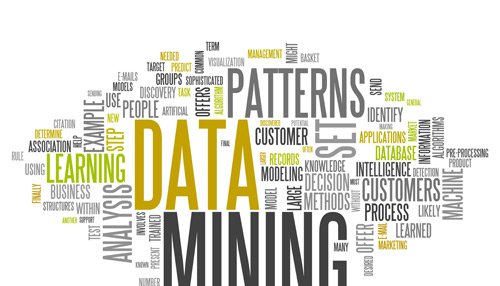Data mining techniques
-
Classification analysis
This analysis is used to retrieve important and relevant information about data, and metadata. It is used to classify different data in different classes. Classification is similar to clustering in a way that it also segments data records into different segments called classes. But unlike clustering, here the data analysts would have the knowledge of different classes or cluster. So, in classification analysis you would apply algorithms to decide how new data should be classified.A classic example of classification analysis would be our Outlook email. In Outlook, they use certain algorithms to characterize an email as legitimate or spam.
-
Association rule learning
It refers to the method that can help you identify some interesting relations (dependency modeling) between different variables in large databases. This technique can help you unpack some hidden patterns in the data that can be used to identify variables within the data and the concurrence of different variables that appear very frequently in the dataset.Association rules are useful for examining and forecasting customer behavior. It is highly recommended in the retail industry analysis. This technique is used to determine shopping basket data analysis, product clustering, catalog design and store layout. In IT, programmers use association rules to build programs capable of machine learning.
-
Anomaly or outlier detection
This refers to the observation for data items in a dataset that do not match an expected pattern or an expected behavior. Anomalies are also known as outliers, novelties, noise, deviations and exceptions. Often they provide critical and actionable information. An anomaly is an item that deviates considerably from the common average within a dataset or a combination of data. These types of items are statistically aloof as compared to the rest of the data and hence, it indicates that something out of the ordinary has happened and requires additional attention.This technique can be used in a variety of domains, such as intrusion detection, system health monitoring, fraud detection, fault detection, event detection in sensor networks, and detecting eco-system disturbances. Analysts often remove the anomalous data from the dataset top discover results with an increased accuracy.
-
Clustering analysis
The cluster is actually a collection of data objects; those objects are similar within the same cluster. That means the objects are similar to one another within the same group and they are rather different or they are dissimilar or unrelated to the objects in other groups or in other clusters. Clustering analysis is the process of discovering groups and clusters in the data in such a way that the degree of association between two objects is highest if they belong to the same group and lowest otherwise.A result of this analysis can be used to create customer profiling.
-
Regression analysis
In statistical terms, a regression analysis is the process of identifying and analyzing the relationship among variables. It can help you understand the characteristic value of the dependent variable changes, if any one of the independent variables is varied. This means one variable is dependent on another, but it is not vice versa.It is generally used for prediction and forecasting.
All of these techniques can help analyze different data from different perspectives. Now you have the knowledge to decide the best technique to summarize data into useful information – information that can be used to solve a variety of business problems to increase revenue, customer satisfaction, or decrease unwanted cost.
To learn more about implementing data mining techniques, as well as various predictive models like machine learning, check out this data sheet.

